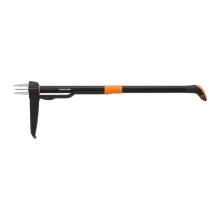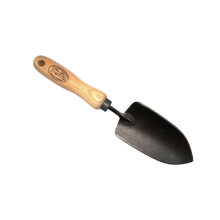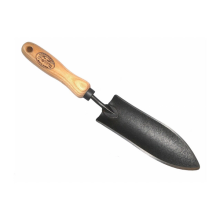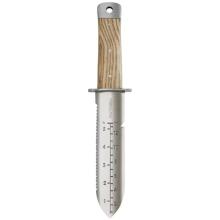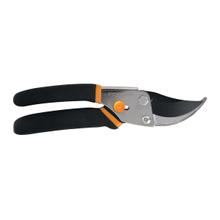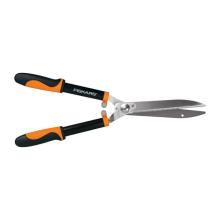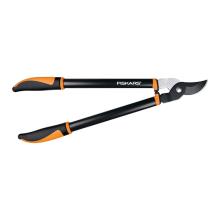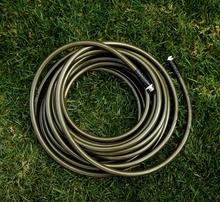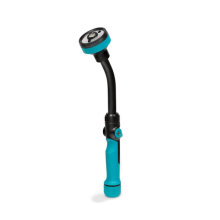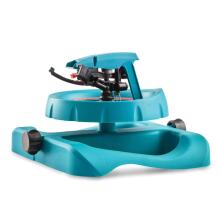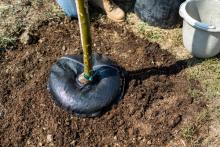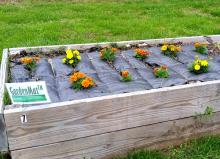Proper tools are essential for making gardening easy, efficient, and enjoyable - but with so many tools out there, how do you know what you really need? Sunday is here to help make your equipment buying experience a little easier with our garden equipment guide. Each category has top recommendations as well as some “nice to have” items that help you:
- Garden in a way that is better for the environment by reducing inputs and emissions
- Maintain a hands-on approach to gardening
- Get multiple uses out of a tool
Protective equipment
Safety first! Protect yourself from sun, stickers, sounds, muck, bugs, and blisters by donning durable, well-fitting gloves, close-toed shoes, and ear and sun protection.
Manual equipment
Manual tools help you dig into gardening with a more hands-on approach. There are a few basics every gardener should have on hand, as well as some options to suit your individual gardening needs.
Hand weeder
These can be used - surprise! - for hand weeding, but are also useful for testing soil compaction. Get a weeder that can be used to tackle weeds throughout the lawn and garden, and make sure it has a comfortable grip.
Shovels and trowels
Dig into the garden using shovels and trowels. Select the right size for the size of hole you need for digging, planting, or weeding.
Clippers, shears, and pruners
Use clippers and pruners throughout the garden to deadhead, prune, trim, weed, and collect cut flowers. Look into safety features, size, and grip to make sure you get the right clipper for the job.
Cultivator
Cultivators help prep the soil to plant, and can be useful for removing stubborn weeds. Hand held cultivators are great for small jobs, but larger and longer tools exist for bigger projects.
Rake
Tidy up the lawn and garden with a sturdy rake. The ideal rake length is one that comes up to your ear when standing up.
Compost bin
Reduce the amount of waste going to landfills and add nutrients and organic matter to the garden by composting right in your backyard. Do a waste audit to make sure your compost bin can handle your waste stream (think kitchen, lawn, and garden waste).
Irrigation equipment
Many garden plants need regular watering to grow, flower, and fruit to their full potential. Irrigation equipment can help you quench your plants’ thirst.
Hose and hose attachments
Hoses and the various attachments can help you provide targeted watering so no irrigation water goes to waste. Use sprinkler attachments for larger areas, or find a nozzle with adjustable spray patterns for watering the lawn and garden or cleaning garden tools.
In-ground irrigation system
In-ground irrigation helps you water the garden uniformly on a set schedule and many let you set up watering zones to give the plants exactly what they need, when they need it, which also helps conserve water. Look into a local professional irrigation installer for in-ground installation or repairs.
Watering cans
This garden-classic is great for watering small areas or containers.
Tree gator or tree diaper
Provide slow, controlled irrigation for trees and shrubs with a tree gator or tree diaper. Just refill as instructed to make sure your plants never go thirsty.
Rain barrel
Reduce water use and cost by setting up a rain barrel. These are used to capture rainfall for irrigating non-edible plants - just make sure you check local and state restrictions first.
Power equipment
Power equipment can come in handy for large projects or for areas where manual tools just won’t cut it. Sunday is committed to being better for people, pets, and the planet - so make sure you read safety information and when possible, opt in for a battery or electric option to reduce emissions, and leave the big jobs to the pros if you aren’t comfortable DYI-ing it.
Leaf blower
If manual options like rakes aren’t for you, leaf blowers make managing fall leaves and garden debris a breeze. Opt for a battery or electric powered option if possible, remember to avoid blowing leaves into the street or gutters to limit phosphorus pollution, and don’t forget your ear protection!
Hedge trimmer
Trimming hedges is quick and easy with a battery-powered hedge trimmer. These can be handy if manual pruning isn’t for you - just make sure you look into (and use!) any safety features.
Cited sources
Basic Garden Tools. North Carolina Cooperative Extension.
Stocking the Toolshed: Hand Tools. University of Georgia Extension.


